Guide To MVP Software Development For Startups Using Joget
Date
Jul 16, 25
Reading Time
19 Minutes
Category
Low-Code/No-Code Development
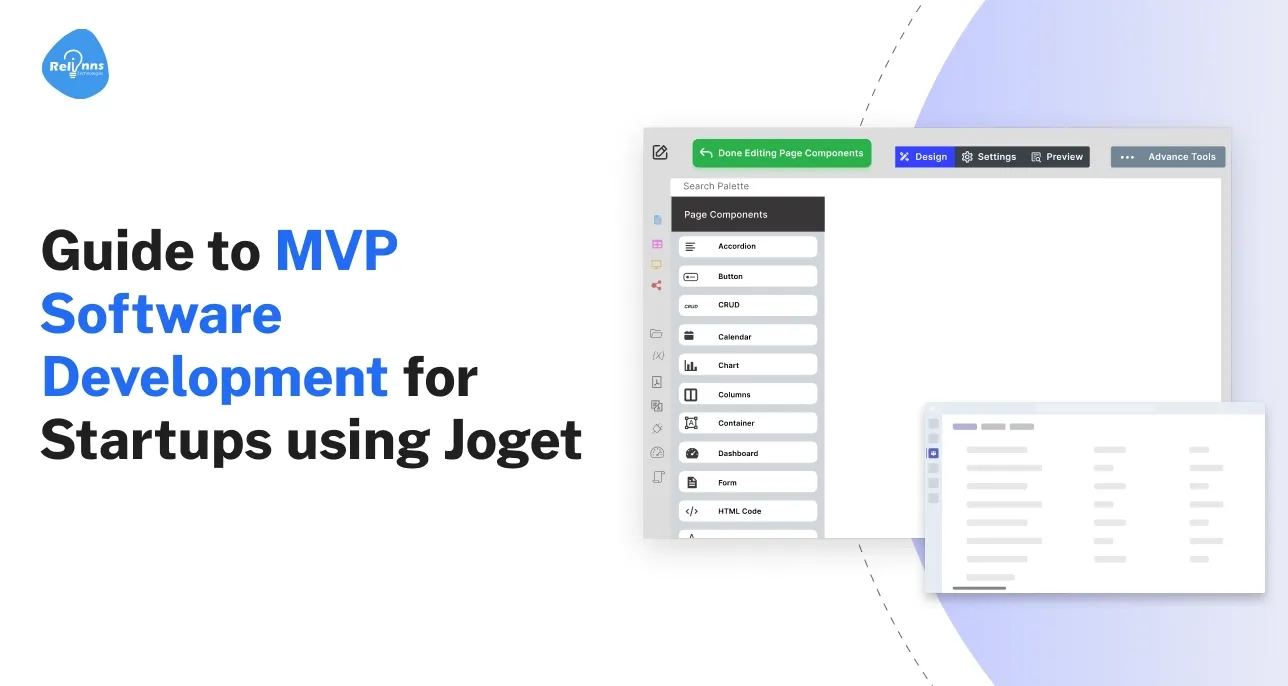
For startups, speed and focus are everything. Building a full product too early risks wasted resources. MVP software development allows teams to launch lean, test ideas, and validate real user demand.
By prioritizing only core features, startups cut development costs, shorten timelines, and gain early feedback. Research shows over 40% of startups fail from building products without proven market need. MVPs reduce that risk.
With Joget’s low-code platform, startups can design and launch MVPs quickly, adapt based on user insights, and scale with confidence. This guide explains how to build smarter MVPs that drive growth.
What is MVP software development?
MVP (Minimum Viable Product) software development means building the first, most basic version of your product with only the must-have features. The goal is to launch quickly, test the idea with real users, and learn what actually works.
Instead of spending months on a full product, startups create an MVP to validate their core idea. For example, a food delivery app MVP might only let users place and track orders, skipping extras like loyalty points. With low-code platforms like Joget, even non-technical founders can build and launch MVPs fast using drag-and-drop tools.
This approach saves time, reduces costs, and gives quick feedback. Each version improves based on real user input, helping businesses move faster toward product-market fit.
Why Does Startup MVP Software Development Matter?
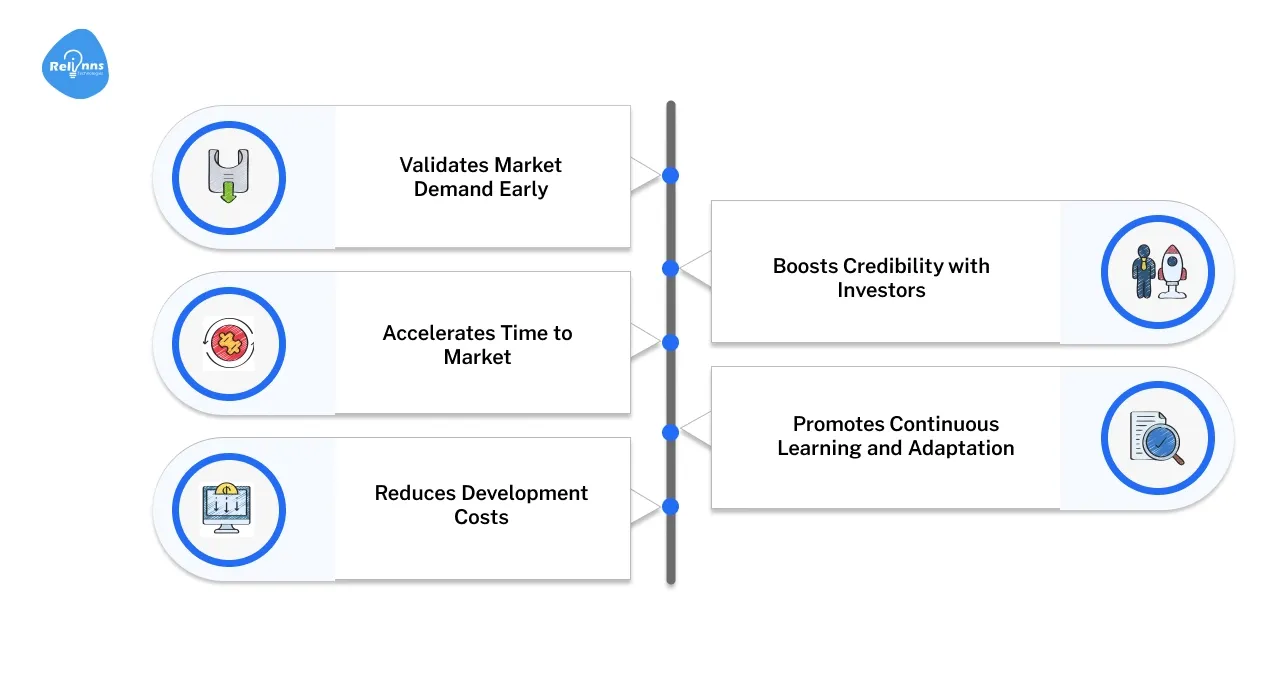
Startups operate under pressure limited time, budget, and market certainty. Startup MVP software development helps founders focus on what truly matters.
- Validates Market Demand Early: Nearly 42% of startups fail due to a lack of market need. By releasing an MVP, startups test real demand before scaling. This feedback loop catches costly missteps early.
- Accelerates Time to Market: In a fast-moving world, speed is an advantage. Startups using MVPs can launch up to 35% faster than those building full-scale products, helping them reach early adopters quickly and adjust based on real use.
- Reduces Development Costs: MVP software development avoids building bloated, feature-heavy products. Instead, it focuses on what’s truly essential, helping startups cut costs, save engineering time, and stretch funding further.
- Boosts Credibility with Investors: A working MVP shows execution ability. Investors prefer startups that demonstrate real traction. Startup MVP software development builds confidence and can attract early funding or strategic partnerships.
- Promotes Continuous Learning and Adaptation: MVPs support fast iterations based on user feedback. Every version improves alignment with market needs, reducing risk and moving the startup closer to product-market fit.
In short, MVP development for startups is more than a product tactic; it's a lean, adaptive mindset that separates successful startups from those that fail.
How to build an MVP by using Joget (Step-by-Step)?
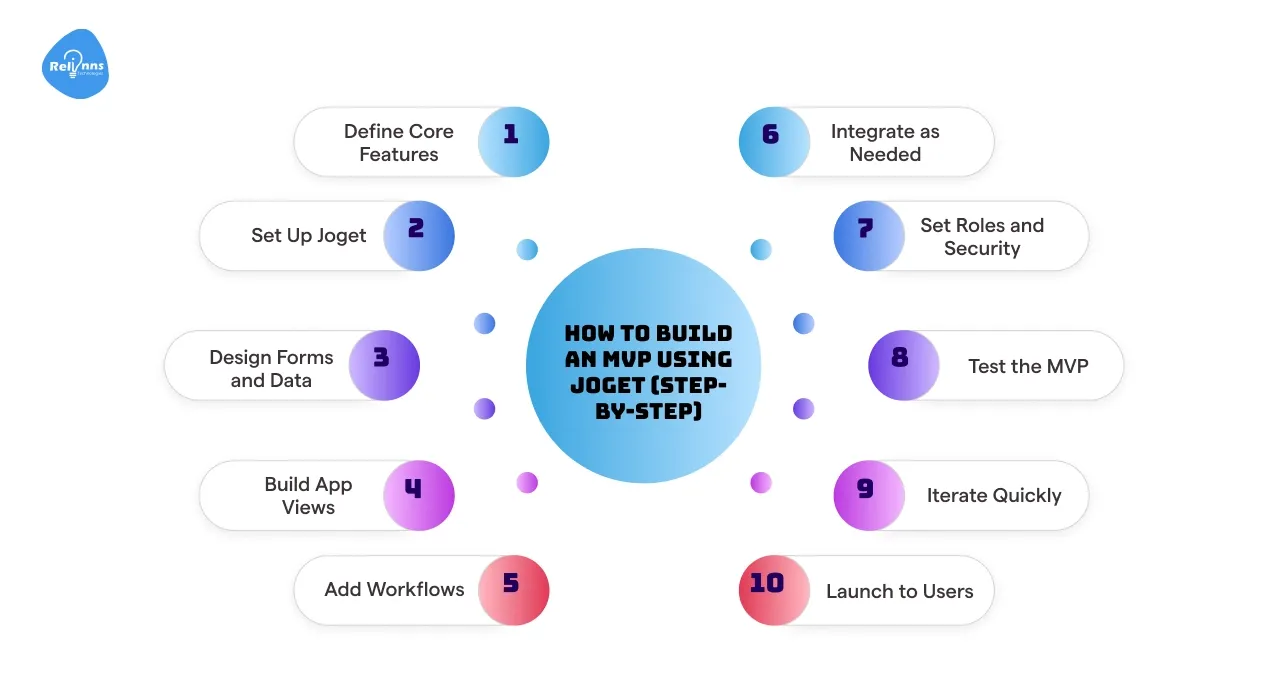
Building a startup MVP with Joget is fast, straightforward, and scalable.
This step-by-step guide walks you through designing forms, adding workflows, integrating data sources, testing with users, and launching a refined MVP all using Joget’s powerful low-code development platform.
Define core features
- Define the core problem your MVP is designed to solve.
- Focus only on features directly tied to solving that.
- Eliminate extras that don't support the product’s core value.
- Prioritize functionality based on user pain points and urgency.
- Keep the scope lean to minimize complexity and expedite the launch.
Set up Joget
- Choose Joget Cloud or on-premise based on your preference.
- Sign up and access the platform through a trial account.
- No complex installation or setup required to get started.
- The platform is ready-to-use for immediate MVP prototyping needs.
- Get building instantly with minimal technical configuration or delays.
Design forms and data
- Open App Composer to start designing custom input forms.
- Create form fields for titles, dates, and task descriptions.
- Define your data model to structure how information flows.
- Keep forms simple, focusing on key MVP data inputs.
- Link forms to database tables using drag-and-drop tools.
Build app views
- Use Userviews to display data through lists or dashboards.
- Customize layouts visually using Joget’s drag-and-drop interface tools.
- Let users view, filter, and interact with submitted data.
- Design clean interfaces that prioritize usability and visual clarity.
- Arrange fields and components to support your MVP’s workflow.
Add workflows
- Open Process Designer to build workflows visually with ease.
- Drag start, form, and end elements into the workflow.
- Assign specific tasks to roles for controlled process execution.
- Add approvals, notifications, or actions without writing any code.
- Joget automates workflow logic for seamless MVP functionality flow.
Integrate as needed
- Browse Joget Marketplace for pre-built plugins and integrations.
- Connect MVP to Google Sheets, CRMs, or payment gateways.
- Use plugins to add external data sources or services.
- Avoid custom code by leveraging available integration components directly.
- Enhance MVP capabilities with easy, drag-and-drop plugin configuration.
Set roles and security
- Define user roles based on access and task responsibilities.
- Assign view or edit rights to each specific user role.
- Restrict sensitive data from unauthorized access within the MVP.
- Set role-based permissions using Joget’s built-in access control tools.
- Simulate real user types to test different app experiences.
Test the MVP
- Launch the MVP to a small test group for early feedback.
- Observe user behavior to identify friction or confusion points.
- Collect input on both functionality and overall usability experience.
- Track performance and note issues that impact user satisfaction.
- Use feedback to refine features and improve user experience.
Iterate Quickly
- Review user feedback to identify key areas for improvement.
- Add or adjust fields and workflows quickly using Joget.
- Make real-time changes without disrupting existing MVP functionality.
- Republish the updated version for another round of user testing.
- Iterate continuously to align the product closer to user needs.
Launch to users
- Launch the MVP publicly once it fulfills core functionality goals.
- Onboard real users and monitor their engagement and behavior.
- Collect usage data to guide future improvements and iterations.
- Continue refining features based on broader user feedback loops.
- Scale gradually while maintaining lean, feedback-driven development momentum.
Throughout this process, Joget’s low-code tools keep development fast and flexible. By following these steps, you can turn an idea into a working MVP without writing extensive code. The visual environment and built-in features help non-developers contribute as well.
Learning how to build an MVP with Joget means applying lean startup principles using tools that accelerate each phase. By keeping each version simple and feedback-driven, startups can master how to build an MVP effectively.
Also Read: List of Low Code/No code MVP Development Agency in USA
What are the best practices for MVP software development?
To make the most of MVP development, startups should follow key best practices: focus on core features, gather user feedback early, iterate quickly, avoid feature creep, and use scalable tools like Joget to adapt and grow efficiently.
- Prioritize ruthlessly: Include only features that deliver your core value. Every extra feature adds time and cost. Use user feedback to decide what truly matters.
- Test early and often: Get real users on the MVP as soon as possible. Use their feedback to guide changes. This feedback loop prevents costly mistakes and ensures product-market fit.
- Keep it simple: Resist the urge to “over-build.” A simple MVP that gets in front of users can be more valuable than a polished product that arrives late. Focus on solving one problem well.
- Document feedback: Record what users like, dislike, or request. Use this data to guide updates. Early feedback is the key ingredient of successful MVP development.
- Be ready to pivot: Be open to changing your plan. If key assumptions prove wrong, adjust your MVP strategy. A low-code platform like Joget makes pivots less painful because changes can be implemented quickly.
- Emphasize iteration in startup MVP development: Ensure each version of your MVP is tested with users, guiding your next steps. Each cycle should build on lessons learned.
- Adopt an MVP software development mindset: Treat each product release as an experiment. Each cycle teaches valuable lessons, and every new MVP version should be simpler and more user-focused than the last.
- Make startup MVP development iterative: Treat each MVP version as an experiment; use results to plan the next steps.
- Gather metrics early: Instrument the MVP to track user engagement and usage data from day one. Hard metrics on user actions help prioritize next steps and validate product-market fit.
- Focus on core value: Ensure the MVP addresses one primary customer pain point exceptionally well. Avoid introducing secondary features until the core functionality is proven effective.
- Ensure basic UX: Even if the feature set is minimal, the MVP should be usable. Intuitive navigation and clear design help users engage and provide good feedback.
- Scale plan: While launching small, think ahead to growth. Use platforms (like Joget) that can easily expand in features and users. This avoids rebuilding if your MVP proves successful.
- Embrace simplicity in MVP development for startups: Focus on one key outcome per version; avoid unnecessary features.
- Embrace the startup MVP development cycle: Keep iterations short and learn from each release to guide your roadmap.
By following these practices, startups maximize the impact of their MVP. Lean MVP development means learning quickly and adapting fast – essential traits for any startup aiming to innovate and lead.
What are the benefits of MVP development for startups?
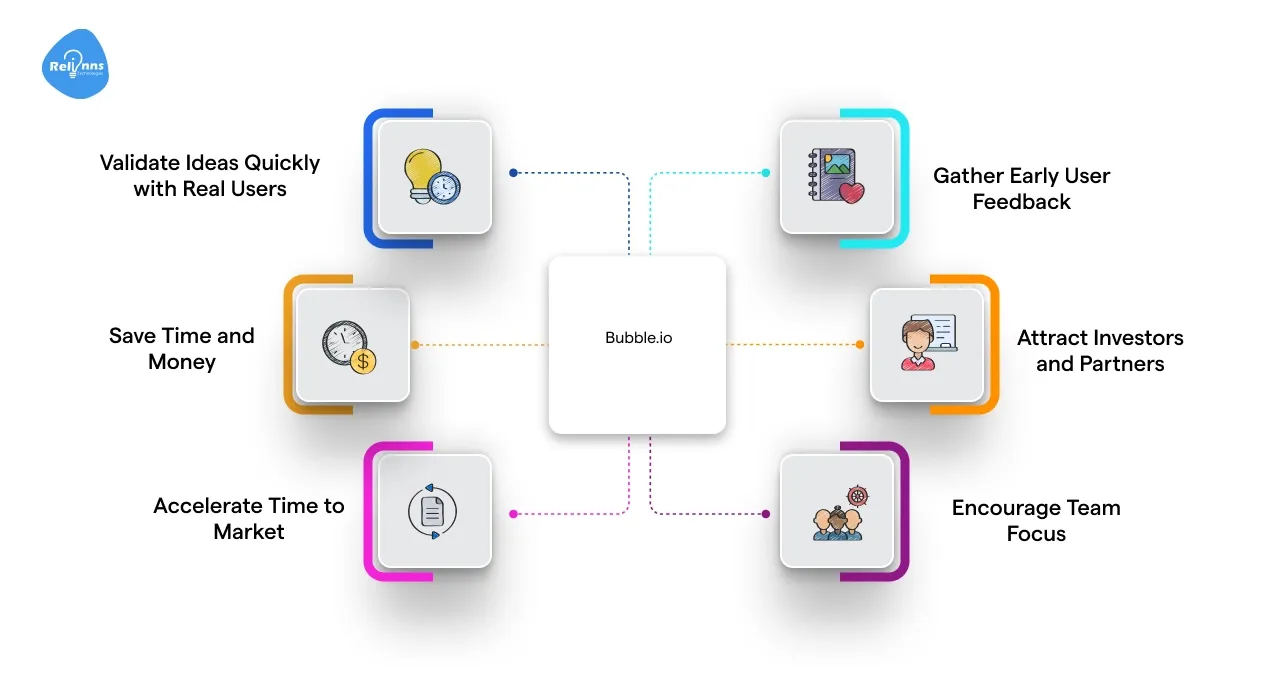
Building an MVP offers several powerful benefits, especially for new ventures. For a startup, time and resources are precious; an MVP focuses development on what matters most and improves the chances of success.
By focusing on a minimal product, startups can reduce waste and learn quickly. Key advantages of MVP development for startups include the following.
Validate ideas quickly with real users
- Test assumptions early to avoid building the wrong product features.
- Honest customer feedback helps refine the product with clarity.
- Reduces failure risk by validating the core product idea first.
- Aligns product development with actual user needs and expectations.
- Builds smarter, user-driven iterations based on real market responses.
Save time and money
- Focused features reduce development time, cost, and unnecessary complexity.
- MVP approach saves up to 60% in initial development costs.
- Launch faster with fewer features and more targeted functionality
- Budget is used efficiently on features that truly matter
- Minimizes waste by eliminating unnecessary early-stage product development.
Accelerate time to market
- MVP launch gives startups a critical head start over competitors.
- Faster releases help capture early adopters and validate product demand.
- Speed to market boosts visibility and shortens feedback cycles significantly.
- MVP deployment drives early traction and agile growth opportunities.
- Launching 35% faster helps startups adapt quicker to trends.
Gather early user feedback
- MVP feedback guides smarter pivots and real-time product refinement.
- User input ensures development stays aligned with actual needs.
- Real insights drive focused improvements, not assumptions or guesswork.
- 70% of MVP adopters report better outcomes, says Gartner.
- MVP-driven changes reduce risk and improve product-market fit early.
Attract investors and partners
- A working MVP proves concept viability to potential investors fast.
- Shows real progress, not just ideas, to interested stakeholders.
- Demonstrates market fit and traction through early product validation.
- Reduces investor uncertainty by showcasing functional, tested features.
- Builds credibility and attracts funding with tangible user engagement.
Encourage team focus
- MVP culture keeps teams focused on solving core problems.
- Prevents feature creep by emphasizing only essential product elements.
- Encourages disciplined decision-making through lean, goal-driven development.
- Each cycle delivers clear lessons from real user interaction.
- Focused development ensures learning and progress in every iteration.
These advantages show why an MVP strategy is vital. Rather than guessing or overspending, startups use MVPs to build the right product efficiently. This lean approach lays a solid foundation for future growth.
Remember: MVP software development remains the foundation of lean product strategy.
Joget: The low-code accelerator for MVP software development
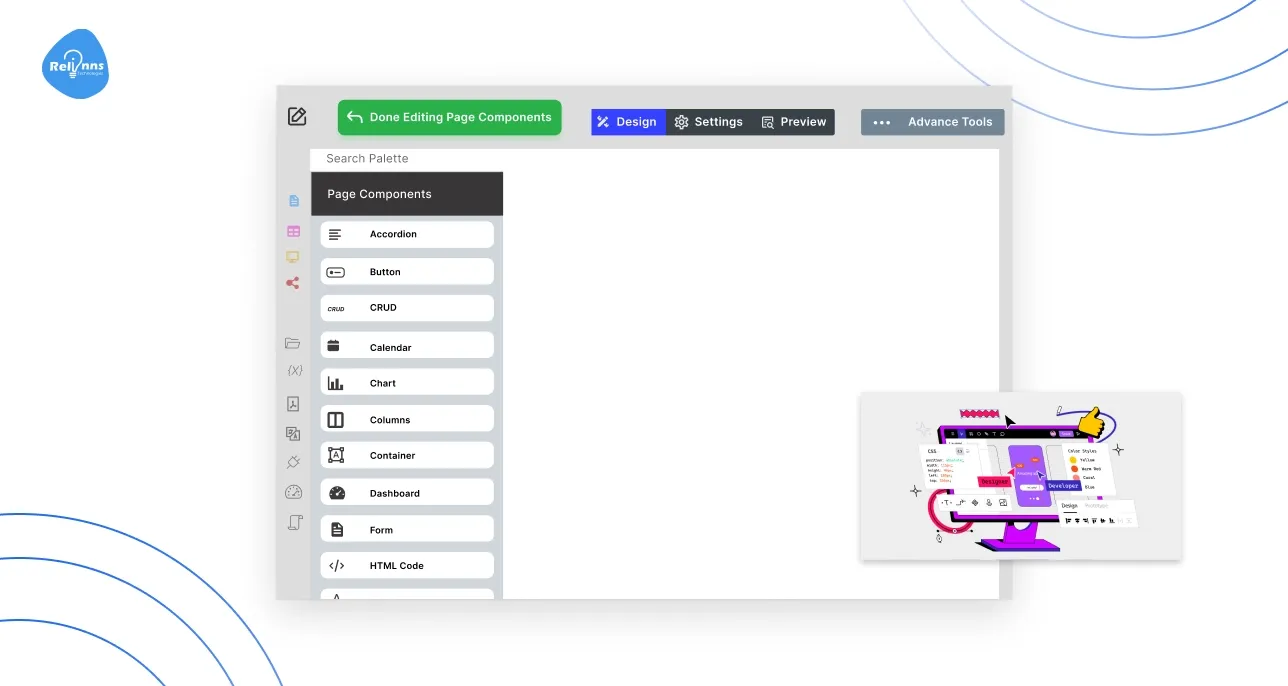
Joget is an open-source low-code platform designed to make MVP software development faster and more accessible, especially for startups. With its drag-and-drop interface, startup teams can visually build full-featured apps, forms, and workflows without writing a single line of code.
According to Gartner, by 2025, over 70% of new business applications will be built using low-code or no-code platforms. That makes tools like Joget more relevant than ever for startup MVP development.
Why startups choose Joget for MVPs?
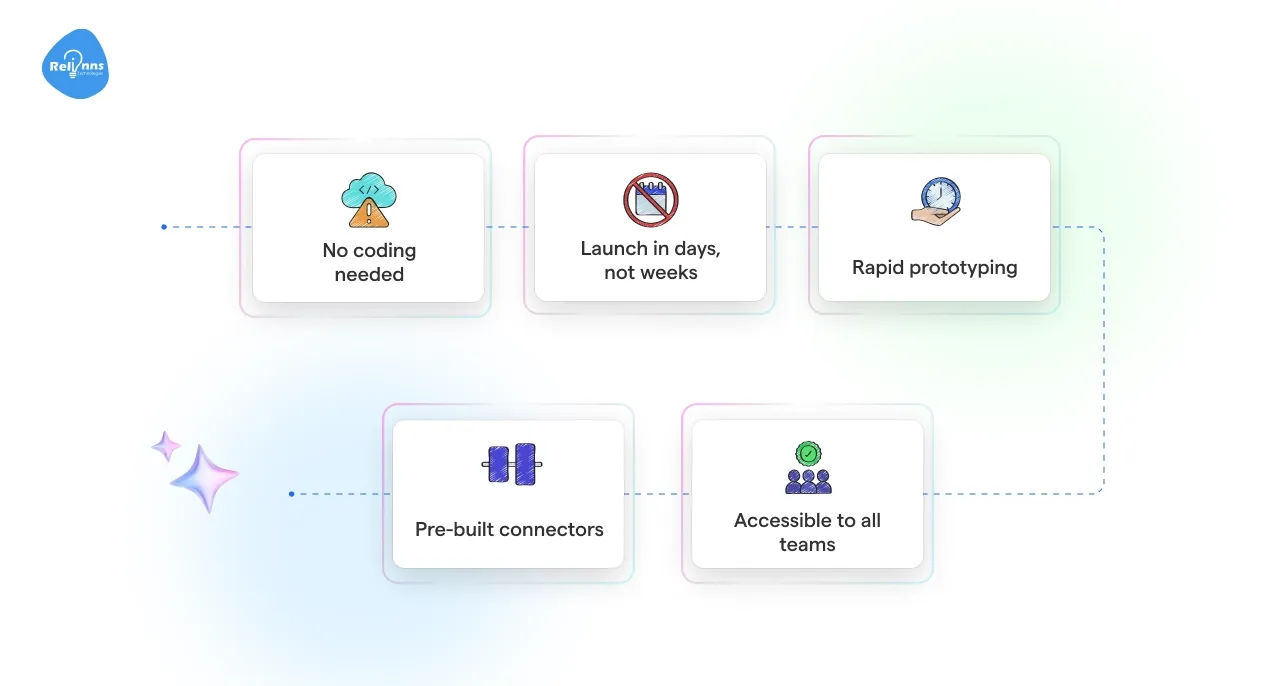
Joget offers real, measurable advantages that help early-stage founders move fast and stay lean.
- No coding needed: Founders can build forms, logic, and dashboards visually.
- Launch in days, not weeks: One team built a functional internal tool using Joget in just one day.
- Rapid prototyping: Design user interfaces, workflows, and databases all in one place.
- Pre-built connectors: Integrate with tools like Google Sheets, payment gateways, or CRM platforms instantly.
- Accessible to all teams: Non-tech members can contribute to app building without engineering support.
This low barrier to entry is a game-changer in MVP development for startups, allowing faster iterations and easier testing of real-world scenarios.
Scalable MVPs without rebuilding
Joget isn’t just a prototyping tool it’s a scalable foundation. MVPs built on Joget can expand seamlessly as the business grows.
- Start with a basic MVP for internal or early access users.
- Gradually add more features, workflows, or integrations.
- Scale to hundreds of users without rewriting the app.
- Support cloud deployments and clustering as usage increases.
This means your MVP isn’t just a throwaway prototype. It becomes the core framework of your actual product, saving time and cost during scale-up.
The Bottom Line
Joget turns ideas into usable MVPs faster than traditional development ever could. For startup teams looking to test, iterate, and launch lean, it offers unmatched speed, flexibility, and ease of use.
Whether you're a solo founder or a small team, Joget simplifies MVP software development so you can focus on what matters solving user problems and learning from feedback.
What are the key features of Joget for MVP software development?
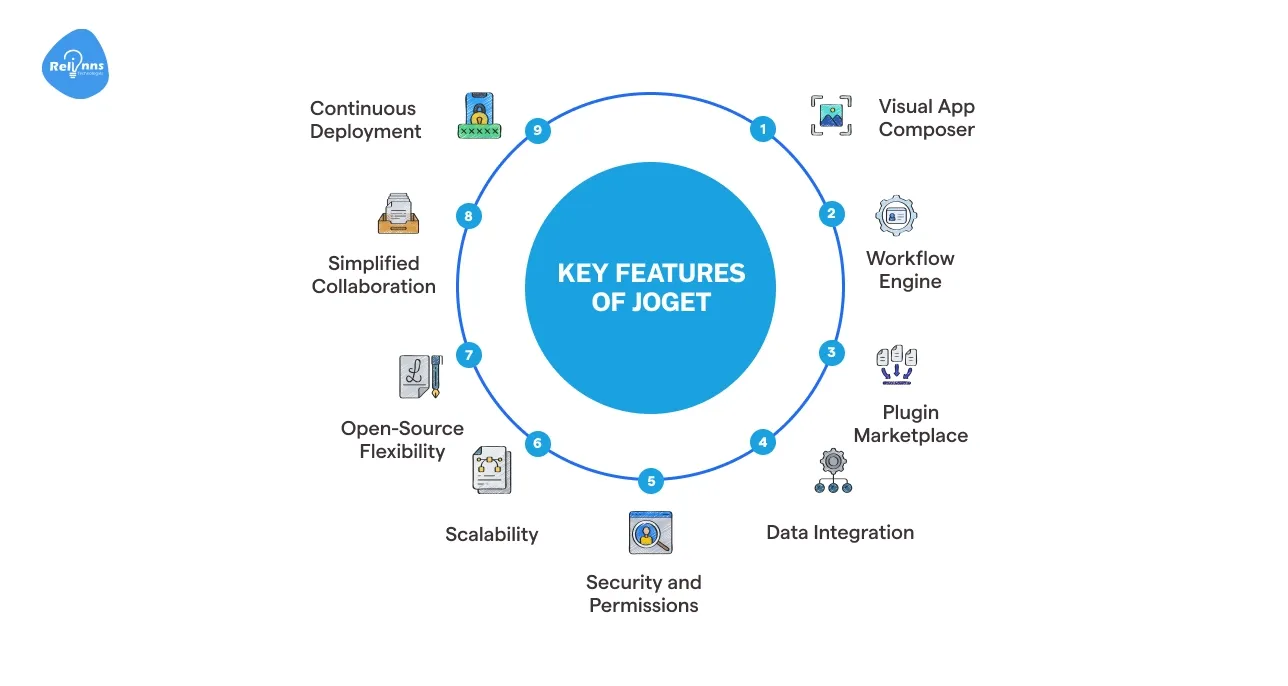
Joget provides a variety of built-in features to help startups build MVPs quickly. These include tools for designing forms, creating workflows, and adding functionality without coding. Such features make it easy for even non-technical founders to contribute.
They significantly reduce the coding effort needed and speed up prototype delivery. Key startup MVP development accelerators in Joget include the following.
- Visual App Composer: Drag-and-drop form and app builders let teams create interfaces and data models without coding.
- Workflow Engine: Pre-built workflow components allow startups to add approvals, notifications, and process automation.
- Plugin Marketplace: A library of ready-made plugins extends functionality. Many tools are plug-and-play, letting an MVP include advanced features fast.
- Data Integration: Joget has connectors for common databases and services. Startups can link an MVP to existing systems or external APIs.
- Security and Permissions: Built-in role-based access control and audit logs mean an MVP can be safely tested even if it handles sensitive data.
- Scalability: Joget apps can grow from a prototype to a complete solution. The platform supports clustering and cloud deployment.
- Open-Source Flexibility: Because Joget is open source, startups can customize the code or create plugins as needed.
- Simplified Collaboration: Multiple team members can contribute simultaneously. It’s helpful where founders visually co-create without heavy coding.
- Continuous Deployment: Joget supports rapid releases. Each change can be published in minutes.
These features make Joget uniquely suited for startup MVPs. Founders can rapidly assemble prototypes using visual tools and then build on the same framework as needs grow.
Joget handles the heavy lifting so teams can focus on product and user needs.
Build your MVP faster: Why Relinns is the best choice for Joget MVP software development?
MVP software development is a strategic must for modern startups. It helps validate ideas early, reduce development waste, and deliver real value faster. By focusing only on core features and user feedback, startups can avoid common pitfalls like overbuilding and missed market fit.
Joget simplifies this process with its intuitive low-code platform, enabling rapid design, testing, and scaling without deep technical overhead.
Whether you're a solo founder or part of a small team, Joget gives you the tools to move from idea to product quickly and efficiently.
But even the best tools need the right hands. That’s where Relinns Technologies comes in. Their startup-first mindset, technical expertise, and proven Joget experience make them the perfect partner to bring your MVP to life.
Why choose Relinns for Joget MVP development?
- 8+ years of Joget experience ensures faster, expert MVP execution.
- 150+ global projects showcase proven success across multiple industries.
- MVPs launch 60% faster using Relinns-led Joget development services.
- 4.4/5 Clutch rating reflects intense client satisfaction and delivery.
- 100+ experts provide scalable MVP solutions for growing startups globally.
MVP software development helps you start simple and learn faster. Joget makes the process easy, and Relinns ensures it’s done right. Together, they allow you to turn your idea into a real product.
Frequently Asked Questions (FAQs)
What industries benefit the most from MVP software development using Joget?
Industries like healthcare, logistics, and fintech benefit from Joget's fast, low-code MVP development due to their complex workflows and need for rapid iteration and compliance.
How is startup MVP development different from enterprise MVP development?
Startup MVP development focuses on speed, lean features, and market validation. Enterprise MVPs may prioritize integration, compliance, or stakeholder testing before full rollout.
Can MVP development for startups include AI or automation features?
Yes, low-code platforms like Joget allow startups to prototype AI-driven workflows or automate tasks in MVPs without building complex backend logic from scratch.
How do I scale my MVP into a full product after launch?
Once your MVP is validated, add features gradually using user feedback. Joget supports a scalable architecture, so you don’t need to rebuild from scratch.
What are the common mistakes in building an MVP?
Overbuilding, skipping user testing, or chasing perfection instead of speed are common MVP mistakes. Start with one feature that solves the core user problem.
How long does MVP software development take with low-code tools?
Using Joget, startups can develop and launch MVPs in 1–3 weeks, depending on scope, far faster than traditional development methods that may take months.


